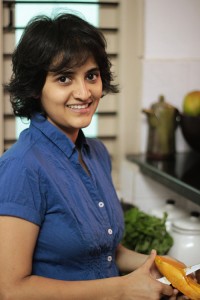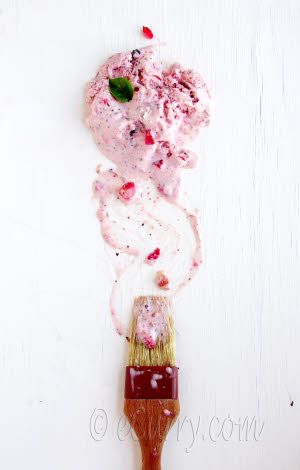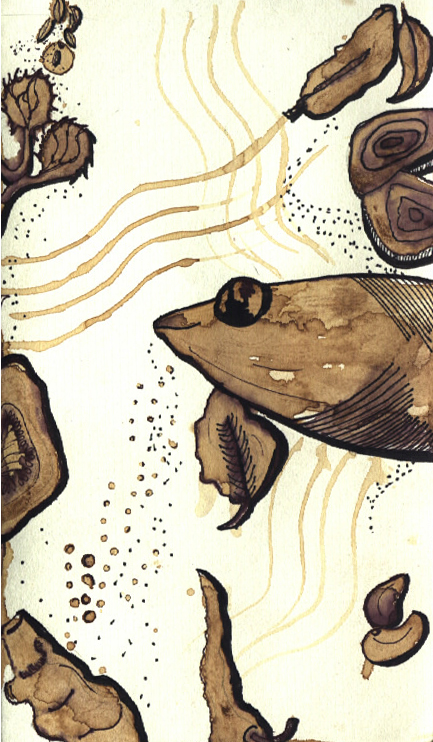by Anupama Krishnakumar
[box]A picture can speak a thousand words, we have heard, and when the subject of the photograph is something that is most fundamental for life to sustain and thrive, it gets all the more interesting. For, when a photograph is that of food, it just doesn’t stop with telling the world about the dish’s existence but stirs in its audience a range of diverse emotions – from being enticed to smitten to feeling the hunger pangs. Anupama Krishnakumar attempts to demystify the charming world of food photography by speaking to food bloggers, Soma Rathore (www.ecurry.com) and Chinmayie Bhat (www.love foodeat.com) and Divya Yadava, food photographer and culinary consultant (www.divyayadava.com). In the process, she discovers the art and technical sides of food photography and other important aspects such as planning, a photographer’s unique style and the challenges.[/box]A picture can speak a thousand words, we have heard, and when the subject of the photograph is something that is most fundamental for life to sustain and thrive, it gets all the more interesting. For, when a photograph is that of food, it just doesn’t stop with telling the world about the dish’s existence but stirs in its audience a range of diverse emotions – from being enticed to smitten to feeling the hunger pangs. Gastronomic desires inevitably plague the stomach and the soul, as eyes become the windows to a magical world of culinary pleasures. Well-taken food photographs eventually send a helpless you scurrying with a gnawing stomach to the kitchen or to a restaurant to do some ‘paet puja’. It could push you to irresistibly pick up a packet of chips or biscuits or chocolates or a pack of instant noodles or readymade mixes at a departmental store. Such is the overpowering nature of a good food photograph and mind you, these photographs belong to a world that works on its own set of rules and methods. Welcome to the world of food photography!
Food Photography – an art
“Food photography, like any other form of art, is a means to communicate and share,” says Soma Rathore, food blogger, who authors the popular food blog eCurry (www.ecurry.com).According to her, the primary focus of food photography is to capture
the beauty and sensual appeal of food. “The photographs also need to talk and tell you a story,” she adds. Chinmayie Bhat, the author and photographer behind the well-maintained and delectable food blog Love Food Eat (www.lovefoodeat.com), agrees that food photography is an art. Chinmayie, who has a background in fine art and design explains: “From almost two years of shooting food, what I have learnt is that food photography is all about making the food look appetizing. It’s important to get the details right to get the viewer salivating.”
Divya Yadava, a culinary consultant and professional food photographer based in Canada (www.divyayadava.com) maintains that she was drawn to food photography when she started her food first food blog. “I realised how important good photographs are for catching people’s attention, especially when it comes to food. I actually found that shooting photos of food is much harder than shooting photos of other subjects, and this made me understand that I had a lot to learn,” she elaborates. The more she explored food photography, the more Divya was drawn towards the art. Intrigued and wanting to explore how creatively she could handle the art and technical aspects of photographing food, she eventually went on to set up her own freelance business focusing on food photography and other areas of culinary consulting, such as food
styling and recipe development among others.
Planning is the Key
Chinmayie holds that food photography was one of the first things that she fell in love with when she started out as a food blogger. As someone who was attracted to food blogs that featured good photographs even before she turned to blogging, food pictures play a prominent role in Chinmayie’s blog now. She carefully selects and displays pictures in her posts, weaving them in along with little stories around the dish and the actual recipe itself. So how exactly does she plan the sequence of shots and decide what needs to be finally featured on the site? “I usually do a few ingredients shots and a few final dish shots. If I feel a certain step of the recipe is very important then I cover that as well,” she responds.
Soma also follows quite an elaborate process to plan out what she wishes to showcase through photographs for a particular recipe. In the end, food photography for her is, to a good extent, about planning. “The decision on composition and style of the shoot depends on what kind of food it is, how it looks and what I want to convey to the audience. Sometimes I make a few notes, or draw a couple of pictures too,” she explains. Some of the things she plans out before a food shoot include the style, composition and the props. A lot of experimentation also happens as she tries out a few shots with different settings, before eventually settling down for what appeals to her the most. “Even after a ‘plan ahead’, a lot of the elements change while I am actually photographing,” she confesses, which results in her changing the style, composition and the props. In the end, the most relevant of the pictures she shoots go up on the site after a bit of photo processing. “I try to coordinate the sequence of photographs with the theme and the story of the post,” says Soma.
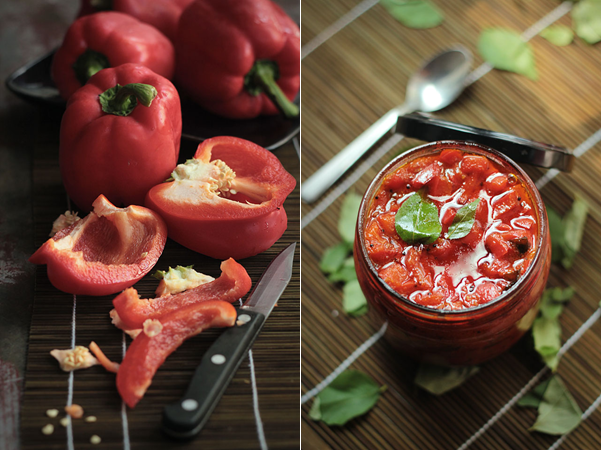
Showing Ingredient and Final Shots: Chinmayie’s photographs for preparing South Indian Red Bell Pepper Chutney. Picture © Chinmayie Bhat (www.lovefoodeat.com)
Divya too insists that planning is “one of the most important elements” when photographing food. “It involves a number of steps, including selection of props such as the cutlery, napkins, background and so on, lighting set up and direction, placement of main dish and garnishes, camera equipment setup, and more,” she explains. Additionally, she draws out what she has in mind as the final outcome of the photo shoot and keeps the entire setup ready before she begins cooking. This, she maintains, helps her plate the dish immediately and start shooting once the dish is done. “I have found that spending a bit more time upfront in the planning stage greatly improves the final outcome,” opines Divya.
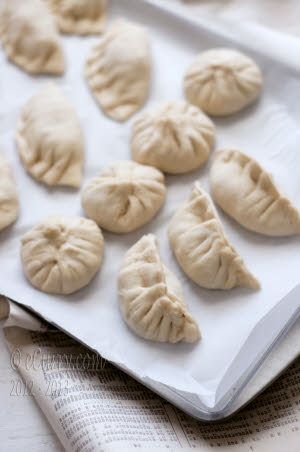
Choosing the relevant pictures: A picture showing a key step in the making of pleated momos. Picture © Soma Rathore (www.ecurry.com)
The Technical Side of the Story
Food photography is no doubt a creative art but it is not without a technical side. Many technical factors play an important role in the life of a food photograph from conception to the final execution. Like Divya points out, “Planning apart, using the right camera settings for the moment you are trying to capture is critical. This includes white balance, aperture i.e. shallow vs. deep depth of field, exposure compensation, etc.” She uses a canon Rebel T3i DSLR camera, with a Canon EF 50mm 1.8 camera lens. According to her, following the right camera settings is crucial because it helps a lot in reducing the amount of time that one may have to spend on post processing. Lighting too is a crucial aspect and Divya insists that she prefers natural lighting as opposed to artificial lighting. “Artificial light has the potential to create harsh shadows and flat lighting, thus making the food look unappetizing in certain situations,” she reveals.
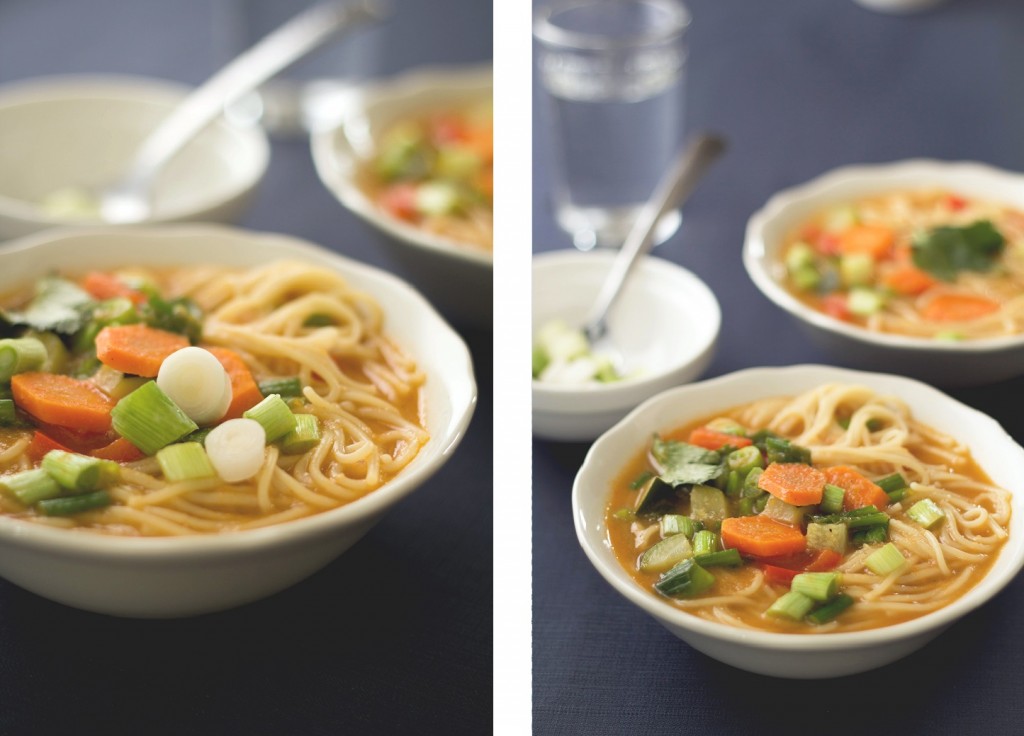
Preferring Natural Lighting Over Artificial Lighting : Divya Yadava captures the vibrant colours of Noodle Soup. Picture © Divya Yadava (www.divyayadava.com)
Soma, who uses a Sony SLT A55V camera with a 50mm lens, reiterates the importance of lighting in food photography. “Like in any other photography the principles of light, composition and styling applies in food photography too,” she shares, adding that “Light is crucial in food photography; probably the only thing that makes or breaks a picture. While shooting I have to see that the light is kind I want or I see how I can manipulate it.”
Evolving a Unique Style
Chinmayie, who uses a Canon 550D with a 50mm 1.8 lens, shares that she starts off her photo shoot with a “blank mind”. “I love focusing on light and
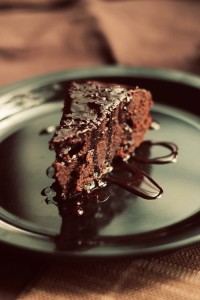
Chinamyie’s photographs are usually dark and moody. They are minimal and uncluttered. Picture © Chinmayie Bhat
colours,” she says. Chinmayie admits that she doesn’t even do elaborate food styling and just starts clicking away depending on the colours, forms and textures in the food and the lighting around. “My photos are very minimal, uncluttered and most of the time, dark and moody. I like hard shadows and rustic styling,” she says, when quizzed about what characterises her unique style, adding that she can never click bright, white, neatly styled food photographs without shadows.
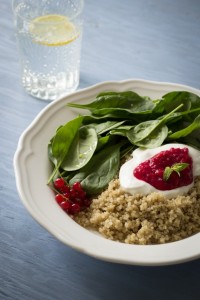
Divya describes her style as “fresh and airy”. She tries to give the image a fresh look, while keeping the styling simple. Picture © Divya Yadava
Divya focuses on using fresh ingredients and is keen on prop styling as well as food styling. Says Divya, “Prop styling which includes choice of cutlery, cloths, etc., and food styling which includes garnishes, placement of food and so on, when properly styled can really make an image pop off the page or screen!” Further, she describes her style of food photography as “fresh and airy”, something she has realised over different attempts of shooting food. “Over time, you will realise that there are certain elements you like more than others, and these will help define your style. Originally my style was to use a lot of colour, especially in backgrounds; but lately I have realised that it is better to let the food shine. I therefore keep the styling simple, but at the same time give the image a fresh look,” she adds.
Soma makes an interesting point when it comes to what a food photograph should focus on. “Taste and aroma are the two most important things that we all associate with food. However, neither of these sensations can be captured in photographs. So the elements of colours and textures in a food photograph are very important,” she elaborates. According to her, photographing food is similar to a planned and staged photo shoot and her style is something that is constantly evolving with experimentation and therefore “fluid”. “What I generally have in mind is how I can make the food delectable and communicate with the audience so they want to eat when they see the photographs,” she shares, adding that since her focus is on Indian recipes, her photographs tend to reflect Indian traditions and her own memories related to those recipes.
Not Without Challenges
Food photography, like any other field, is not without its own set of challenges. According to Chinmayie, the challenge tends to change with each recipe she works on. She feels that it is easier to shoot food that is naturally full of beautiful colours and forms. “I find it hard to shoot certain Indian dishes, which taste fantastic but are not very photogenic. It’s easy to make a curry, chutney or dosa look very unappetizing,” she opines.
Divya feels that capturing the food within a particular timeframe in order to retain the freshness is a challenge. “Since food tends to remain fresh for only a limited period of time, your window of opportunity to capture that ’perfect’ moment is very short – you cannot ask your food to pose again for you as a model!” she says. This is all the more important because according to her, given the close-up range of food photographs, flaws if any will be visible and can distract people from what you want them to appreciate.
Soma holds that shooting Indian curries is something she finds difficult even though that’s the focus of her blog. “The general brownish or orangish shade that they carry and the runny texture of the sauce which tends to hide every ingredient is the most difficult thing to plate and shoot. The challenge is always to describe these dishes clearly,” she elaborates. Further, while shooting food that is familiar to the audience could be relatively easy, if it is something the viewer hasn’t encountered before, Soma feels that she has to put in a lot of thought into the pictures because she has to make the audience perceive and taste that dish through the photographs. Additionally, shooting frozen food in summer and unsuitable light conditions are other challenges that she highlights.
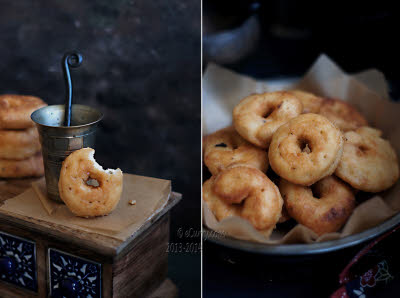
Soma’s photographs tend to reflect Indian traditions and her own memories related to those recipes. © Soma Rathore
Praise and Critique Come Together
One of the common features in food blogs is the feedback the authors receive with respect to their food photographs. “I think the most common compliment I receive is that my photographs are different from other food blogs. A lot of people feel that the photographs look ‘real’ and ‘approachable’,” shares Chinmayie. Soma too says she receives appreciation from her blog readers for her food photographs. However, she shares that sometimes, attempts to move away from traditional settings and experimenting with a shoot, are met with some resistance. For instance, one of her readers described her attempt to have a photograph of a real ice cream painted on a board in one of her posts as “unrealistic”. Soma says she often interacts with fellow bloggers and food photographers on social networking sites seeking honest feedback on her photographs in a bid to improve and evolve.
Food Photography as a Profession
Undoubtedly, soliciting honest feedback is a practice that becomes all the more important in case you choose to pursue food photography as a profession. So how are the opportunities in case you want to move beyond blogging and step into the professional world of food photography? Divya believes that there are indeed lot of professional opportunities. “Typically, clients for food photography include print magazines, online magazines, restaurants, hotels, food manufacturers, and more. Another avenue for food photographers is to license their images through stock photography websites,” she points out.
At the same time, it is not an easy industry, warns Divya, especially when you are making a fresh start. “You need to be quite patient, as you have to not only develop and refine your own skills, but also have to build a network around you so that you get noticed,” she says. On a positive note though, the Internet has made it quite easy for good food photography to be discovered online. “I think it is very important to develop your own unique style. This will help you differentiate yourself, get noticed and be remembered,” suggests Divya. Further, one needs to continuously work on updating skills and learning new techniques. In the end, it’s all about patience, perseverance and commitment. “While the going can be tough in the beginning, you have to keep yourself motivated and strive to be the best that you can be,” she concludes.
Anupama Krishnakumar loves Physics and English and sort of managed to get degrees in both – studying Engineering and then Journalism. Yet, as she discovered a few years ago, it is the written word that delights her soul and so here she is, doing what she loves to do – spinning tales for her small audience and for her little son, bringing together a lovely team of creative people and spearheading Spark. She loves books, music, notebooks and colour pens and truly admires simplicity in anything! Tomatoes send her into a delightful tizzy, be it in soup or rasam or ketchup or atop a pizza!
[facebook]Share[/facebook] [retweet]Tweet[/retweet]



